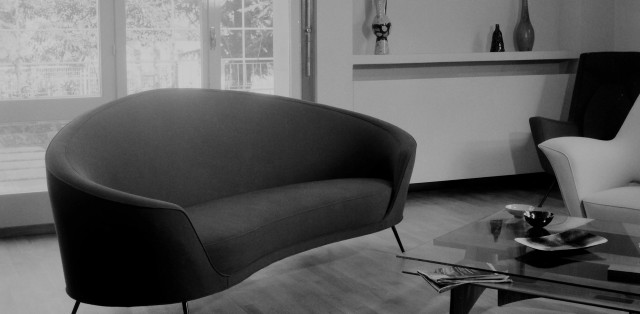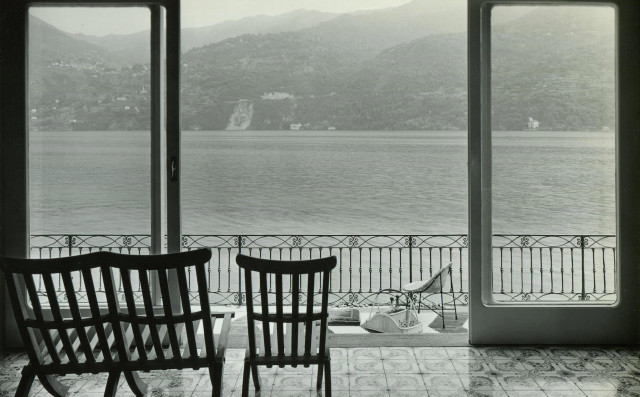The Ico Parisi Design Archive was established with the aim of conserving, cataloguing, studying and investigating the work of the designer Ico Parisi and covers his entire career from its early beginnings through until his death. In addition to its extensive documentation of most of the furniture and objects designed by Parisi, the archive has more than five thousand original photographic prints, slides and negatives, as well as some glass plates. The archive is also home to his paintings, art glass, ceramics and numerous furniture pieces designed by Parisi. The large library adds much to archive’s collection, including specialist publications and most of the books that contain works of Parisi, not to mention its extensive selection of Italian and foreign magazines.
Photography by Archivio Ico Parisi . Words by Roberta Lietti
Back in the early fifties Ico and Luisa Parisi put forward a new idea of household living through the art of careful mixing of diverse identities and diverse periods. The furniture designed by Ico enter into a fruitful dialogue with antique furniture and décor. The artistic process brings together local and ethnic craft work, using silks and antique lace, and blending with modern fabrics and carpets.

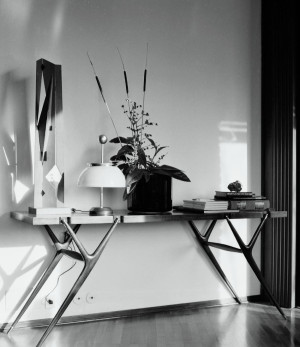
A modernfold folding teak door, just opened like a theatre curtain, separates the living room from the bedroom where a simple square mattress support, covered with a precious bedspread by Marisa Bronzini, in raw silk, is suspended from the ground, and held in place by wooden clamps. Above the headboard bed there is a potpourri of paintings, icons, cherubs and nineteenth-century rosaries, picked up at flea markets and junk shops. These objets d’art are also objects of affection, each silent witness to its own story, and personal decorative adjunct to unique design furnishings. This is what the ‘Parisi house’ means, a model of a way of life even more than it is a style, where modernity and functionality are always linked and intertwined with the poetic of objects and forms.
Ico and Luisa Parisi were a couple in life and in work. They were at once complementary and opposed souls, he volcanic, explosive and eclectic as befitted his Sicilian DNA, while she was pragmatic and matter of fact, tenaciously Lombard in her approach. The combination of their characters gave rise to a great deal of furniture, especially in the 1950s, and it remains surprisingly current. It was during that magnificent decade that Ico designed armchairs and sofas for Cassina, masterpieces of essential geometric design that went well with wall-mounted bookcases, being early examples of his relentless exploration of modular systems that would be completed with the production for MIM, and the surrounds for fireplace, ever an central element in the architect's design repertoire.
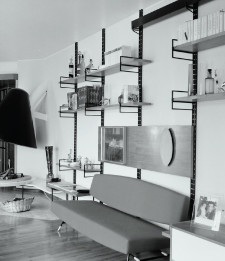
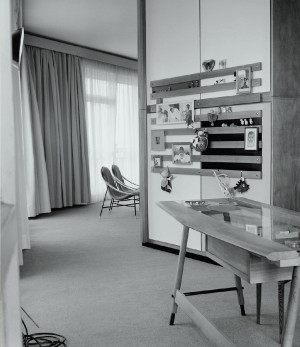
While Parisi continued, almost bulimically, to sketch designs for furniture and accessories for skilled artisans and for early industrial production, designed as pieces to furnish elegant homes, Luisa was educating and instructing their clientele of the good bourgeoisie, seeking to effect changes in the current taste, and encouraging them to dare to put together what were up to then unlikely combinations, such as placing Melotti ceramic on Cantù lace or a group of African sculptures on the mantelpiece. More than sixty years have passed since that golden age and Ico Parisi's work has passed in and out of fashion. After years in the shade, his studies in design studies have recently been rediscovered and brought to the fore thanks to academic interest, exhibitions and publications that have all brought to light the extraordinary modernity of the work. The ‘Parisi style’ is certainly a milestone in the rich, complex, and vast panorama of twentieth century Italian design, and well deserves to be back in vogue.

